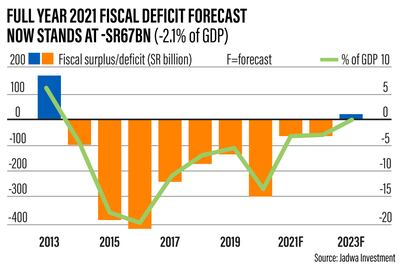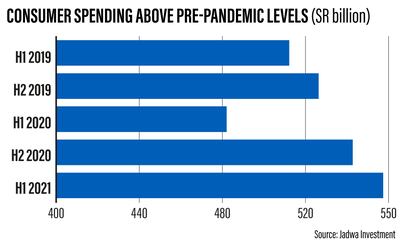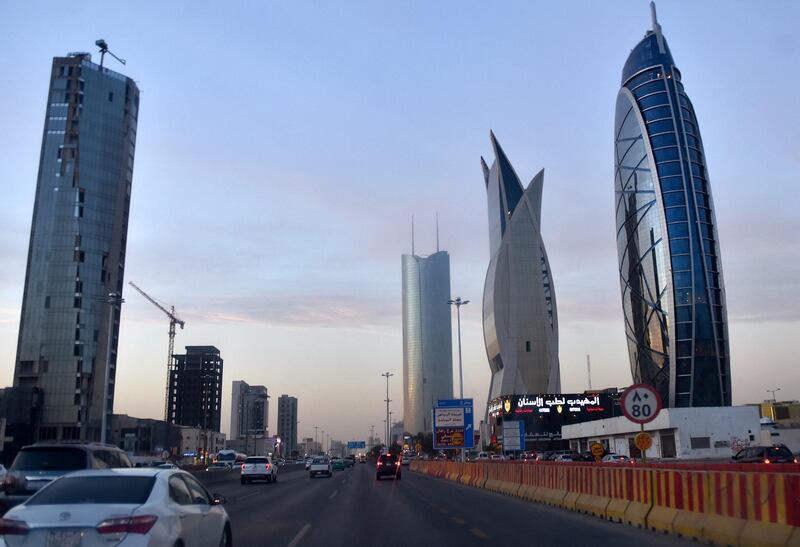Saudi Arabia’s economy is on “a very firm footing”, driven by growth in the kingdom’s non-oil sector in the first six months of the year that has set the foundation for faster economic expansion in the second half of 2021, according to Jadwa Investment.
Both actual and flash estimates of the country’s gross domestic product expansion point to a rise in economic activity as the kingdom continues to recover from the pandemic-driven slowdown, the Riyadh-based asset management and advisory company said.
Jadwa upgraded its full-year GDP forecast to 1.8 per cent from 1.3 per cent. It sees oil GDP being marginally down year-on-year, contracting 0.7 per cent in 2021, in line with its previous projections.
However, it expects non-oil growth to expand 3.5 per cent, primarily driven by non-oil private sector growth of 4.4 per cent this year.
“Most non-oil high frequency data has improved consistently since the start of the year, with a dramatic rise in economic activity during Q2,” Jadwa said.
“While the rebound is no surprise, some sectors have performed better than anticipated. More specifically, we see higher growth in … real estate, non-oil manufacturing and wholesale and retail trade, restaurants and hotels.”
However, Jadwa’s 2021 economic expansion estimate of the Arab world's largest economy is below the International Monetary Fund's projection of 2.4 per cent GDP growth this year. Saudi Arabia’s swift response to the Covid-19 pandemic, rebound of its non-oil sector and investment from its sovereign wealth fund – the Public Investment Fund – will drive growth this year, the Washington-based lender said in July.
The kingdom's non-oil economy is projected to grow 4.3 per cent this year, according to the IMF. Capital Economics is more bullish and has forecast an expansion of 4.8 per cent this year and 6.3 per cent in 2022.
Saudi Arabia, Opec’s top oil exporter, is focused on diversifying the economy under its Vision 2030 programme that aims to cut its dependence on hydrocarbons and develop local industries and the kingdom's manufacturing capabilities.

The PIF is a central plank of Riyadh's efforts to nurture local industry, develop new non-oil sectors and create more jobs in the kingdom. In January, the PIF unveiled a five-year strategy under which it intends to double its assets to $1.07 trillion and invest a minimum of $40bn a year into the kingdom's economy until 2025.
The investment is expected to create 1.8 million jobs and contribute $320 billion to Saudi Arabia's non-oil economy.
On the fiscal side, Jadwa expects oil prices to average $67 per barrel, which translates into government oil revenue of 568bn Saudi riyals ($151.46bn) this year, up from 528bn riyals in 2020.
“With no changes to government expenditure, we see the fiscal deficit totalling 67bn riyals (-2.1 per cent of GDP), [which is] 53 per cent lower than budgeted by the Ministry of Finance,” Jadwa said.
It expects Saudi Arabia’s oil GDP to rebound in the second half of the year as the “crude oil production is set to show large yearly rises”. The bounce back is in line with the Opec+ group of oil exporters' agreement to raise overall output by 400,000 barrels a day per month from August to December.
“Higher Saudi oil output and continued growth in the petroleum refining sector will mean better performance for oil GDP in H2, year-on-year, but this will not be enough to push overall growth into the positive territory for 2021 as a whole,” Jadwa said.








